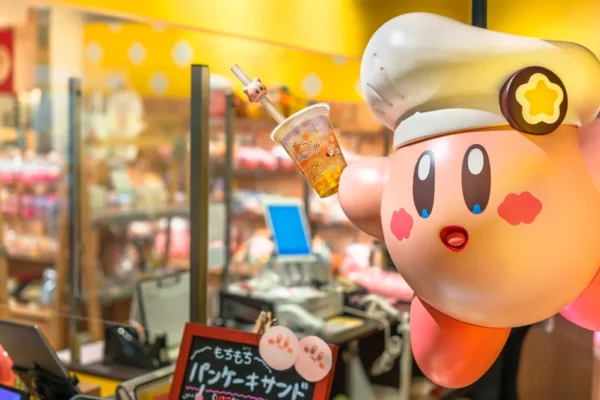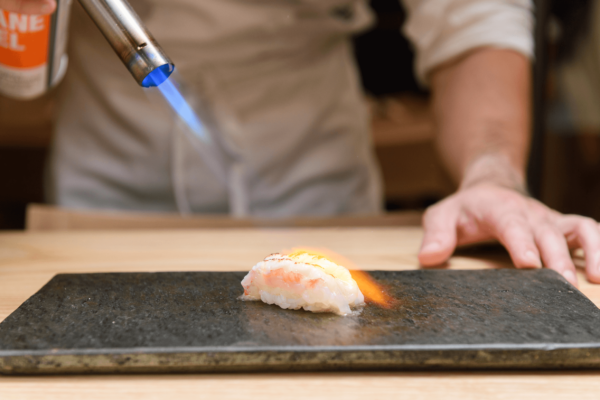As I stepped into Gonpachi Tokyo, the bustling energy and rich aroma of grilled yakitori immediately transported me to a world where traditional Japanese dining meets contemporary flair. This iconic izakaya, nestled in the heart of Tokyo’s vibrant Nishi-Azabu district, has become a must-visit destination for both locals and tourists alike. Join me as I take you through my unforgettable experience at this legendary establishment, often referred to as the “Kill Bill restaurant.”
A Journey Through Time: The History and Ambiance of Gonpachi
Upon entering Gonpachi, I was struck by the sheer grandeur of the space. Towering wooden beams, reminiscent of feudal-era architecture, stretched towards the ceiling, while lanterns cast a warm glow over the dining area. The restaurant’s design pays homage to the Edo period, creating an atmosphere that feels both authentic and cinematic.
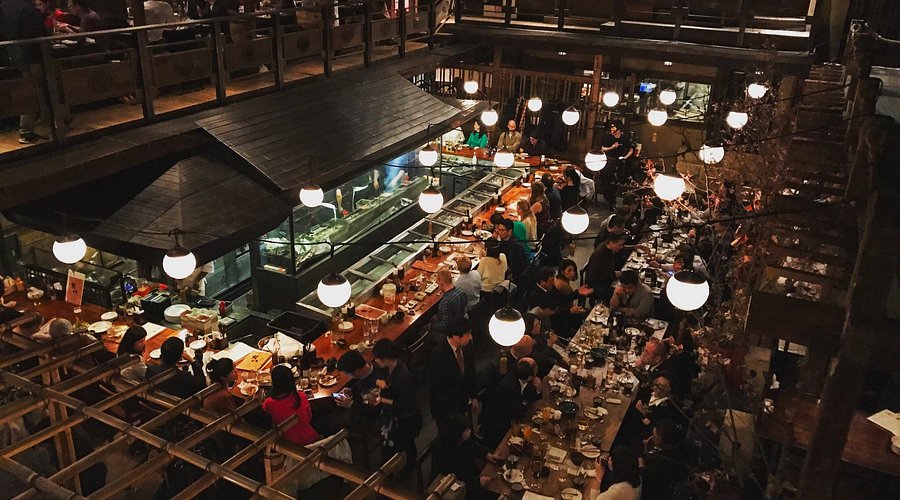
Interestingly, Gonpachi’s fame isn’t solely due to its impressive decor. The restaurant gained international recognition after serving as inspiration for the iconic “House of Blue Leaves” scene in Quentin Tarantino’s “Kill Bill: Vol. 1.” While the actual filming didn’t take place here, the resemblance is undeniable, and it’s easy to imagine Uma Thurman’s character engaging in an epic sword fight amidst the tables.
As I settled into my seat, I couldn’t help but notice the diverse mix of patrons – from suited businessmen to wide-eyed tourists, all drawn by the restaurant’s unique blend of history and pop culture appeal.
Culinary Delights: A Feast for the Senses
Gonpachi’s menu is a testament to the rich tapestry of Japanese cuisine, offering a wide array of izakaya favorites alongside some modern interpretations. I started my culinary journey with their signature dish: the Gonpachi Yakitori. These skewers of succulent grilled chicken, lightly seasoned and perfectly charred, set the tone for the feast to come.
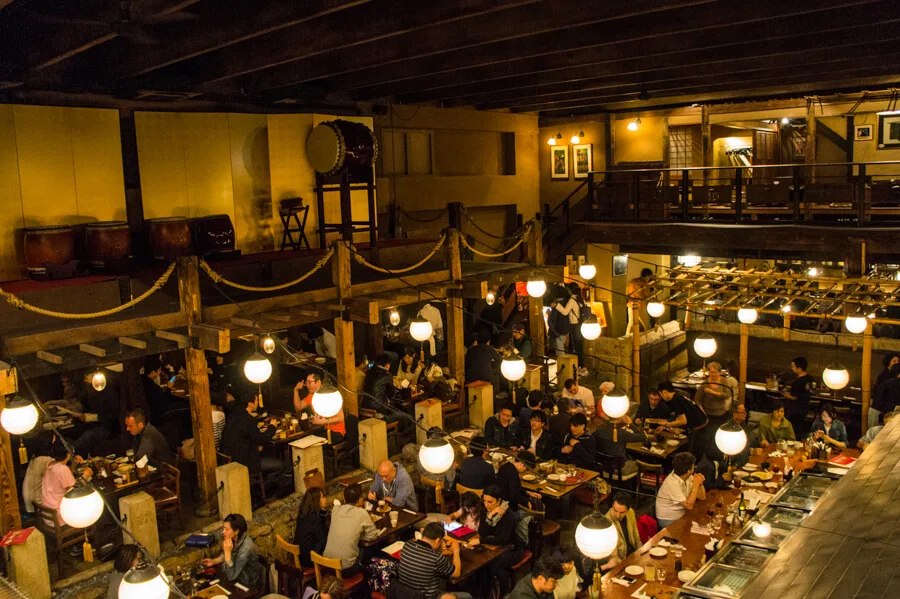
Next, I sampled the soba noodles, handmade daily on the premises. The delicate texture and nutty flavor of the buckwheat noodles, served cold with a light dipping sauce, provided a refreshing contrast to the robustly flavored grilled dishes.
One standout dish that surprised me was the Wagyu beef carpaccio. This fusion of Japanese and Italian cuisines showcased paper-thin slices of premium beef, drizzled with truffle oil and topped with shaved Parmesan. It was a unexpected delight that exemplified Gonpachi’s ability to innovate while respecting tradition.
For those seeking a more interactive dining experience, I highly recommend trying the shabu-shabu. Cooking thinly sliced beef and vegetables in a simmering pot of dashi broth at your table not only tastes delicious but also adds an element of fun to the meal.
Navigating Gonpachi: Tips for the Perfect Visit
- Timing is Everything: Gonpachi can get incredibly busy, especially during dinner hours. I found that arriving early, around 5:30 PM when they open for dinner, allowed me to secure a table without a reservation and enjoy a more relaxed atmosphere before the evening rush.
- Explore the Levels: The restaurant spans multiple floors, each offering a slightly different ambiance. Don’t hesitate to ask for a tour or to be seated in a specific area. The second floor provides an excellent vantage point for people-watching and taking in the full scope of the restaurant’s design.

- Embrace the Izakaya Spirit: Remember, izakayas are meant for leisurely dining and drinking. Take your time, order dishes to share, and don’t be afraid to try something new. The staff is generally happy to offer recommendations if you’re unsure.
- Budget Wisely: While not the most expensive restaurant in Tokyo, Gonpachi isn’t cheap either. Expect to spend around 4,000 to 6,000 yen per person for a satisfying meal with drinks. Lunch sets, available on weekdays, offer a more budget-friendly option to experience the restaurant.
- Learn a Few Japanese Phrases: While the staff can generally communicate in English, learning a few basic Japanese phrases like “Oishii!” (delicious) or “Kanpai!” (cheers) can enhance your experience and show appreciation for the culture.
Beyond the Meal: Gonpachi’s Cultural Significance
What truly sets Gonpachi apart is its role as a cultural bridge. Here, centuries-old culinary traditions mingle with modern gastronomy, creating a dining experience that feels quintessentially Tokyo. The restaurant has become a symbol of how Japan continually reinvents itself while honoring its past.
During my visit, I was fortunate to witness a brief taiko drum performance, a unexpected treat that added to the immersive atmosphere. These occasional cultural showcases further emphasize Gonpachi’s commitment to providing more than just a meal, but a window into Japanese culture.
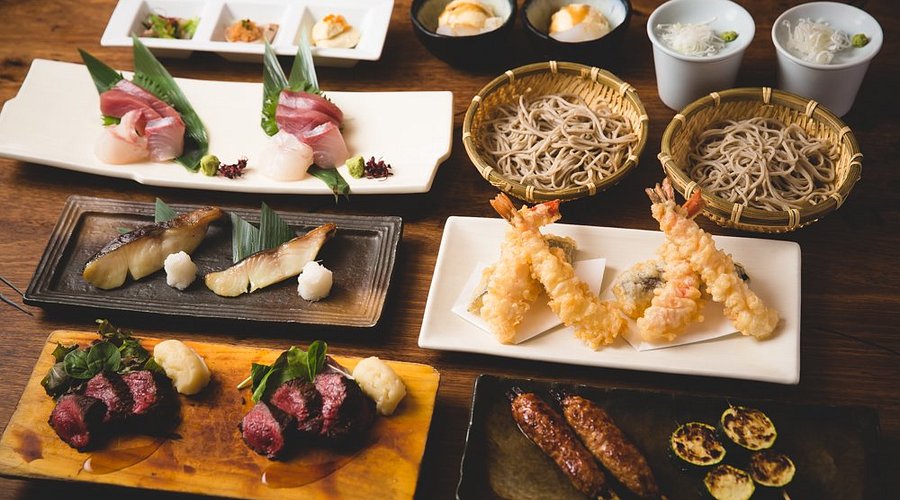
It’s worth noting that Gonpachi has expanded beyond its original location, with branches in other parts of Tokyo and even internationally. However, the Nishi-Azabu location remains the most famous and, in my opinion, the most atmospheric.
Reflecting on my Gonpachi Experience
As I left Gonpachi, full of delicious food and rich experiences, I realized that its appeal goes far beyond its connection to “Kill Bill.” This izakaya offers a unique blend of traditional and contemporary Japan, serving as both a time capsule and a mirror of modern Tokyo’s vibrant food scene.
Whether you’re a film buff, a foodie, or simply a curious traveler, Gonpachi offers an unforgettable dining experience that encapsulates the spirit of Tokyo. It’s a place where every meal feels like a celebration, and every visit leaves you with a deeper appreciation for Japanese cuisine and culture.
For those looking to explore more unique travel destinations and experiences like Gonpachi Tokyo, I recommend checking out Findtourgo. Their curated selection of travel ideas can help you uncover more hidden gems in Tokyo and beyond.


